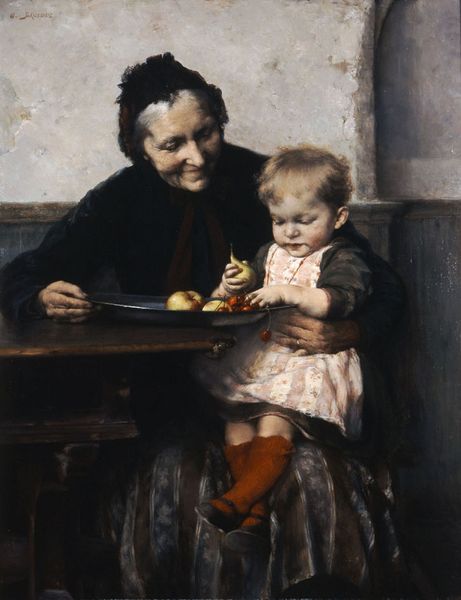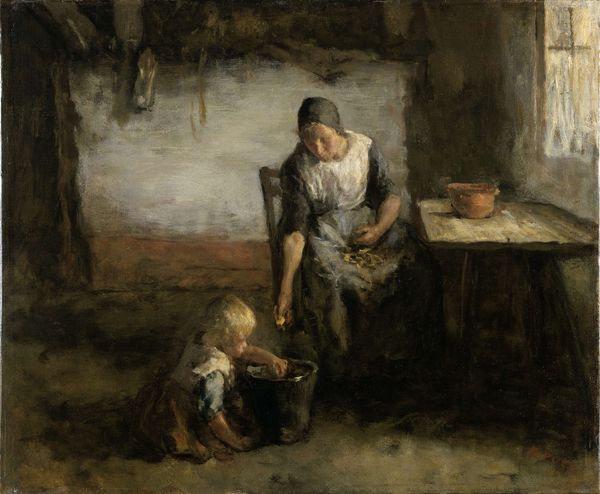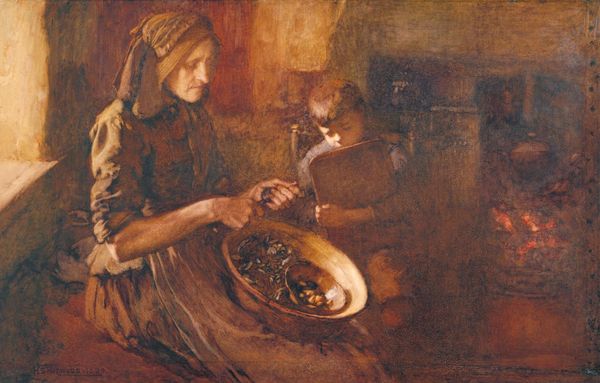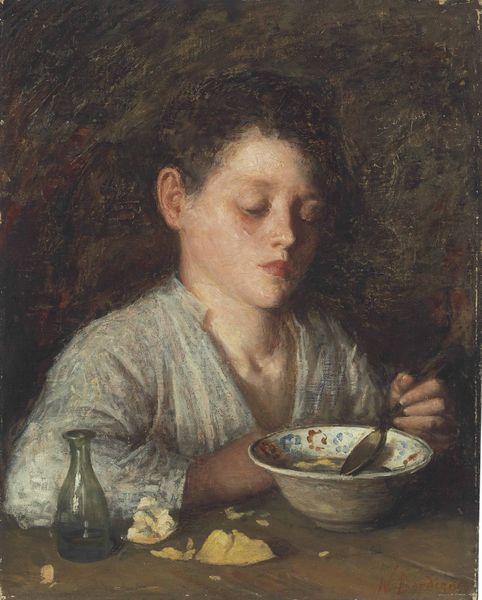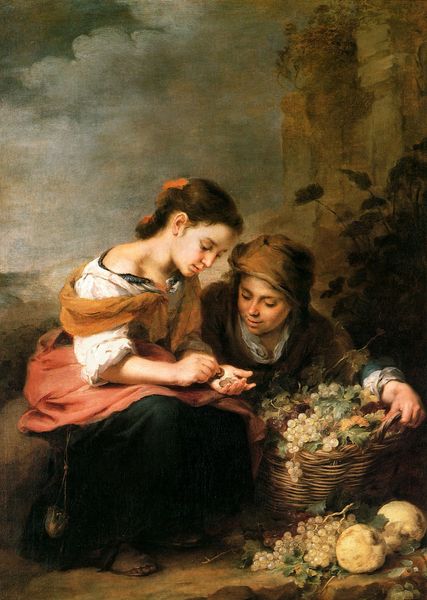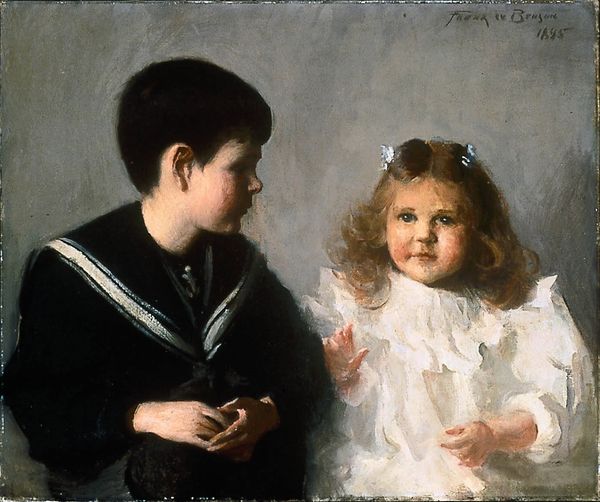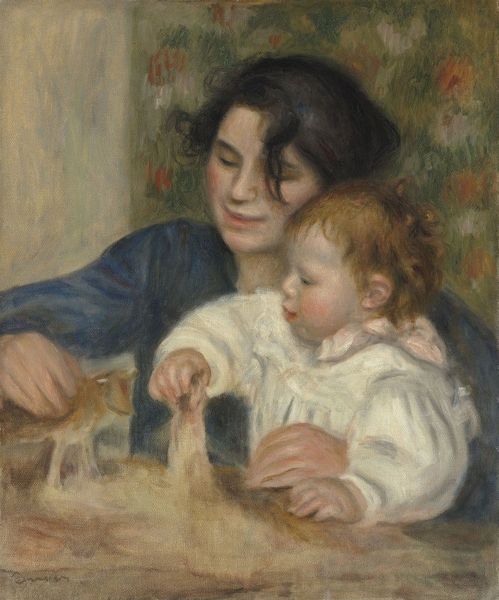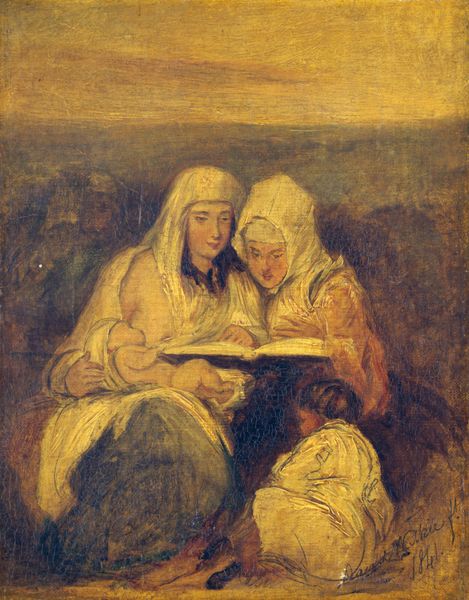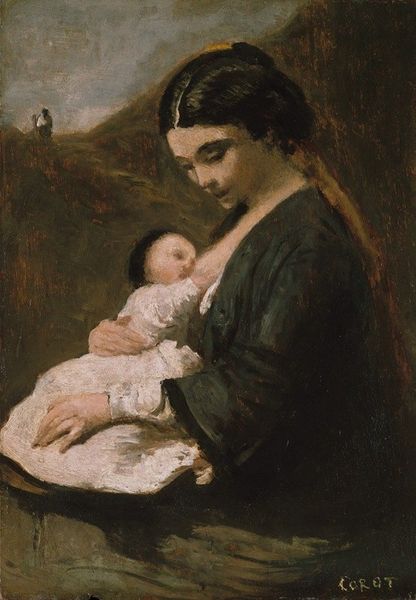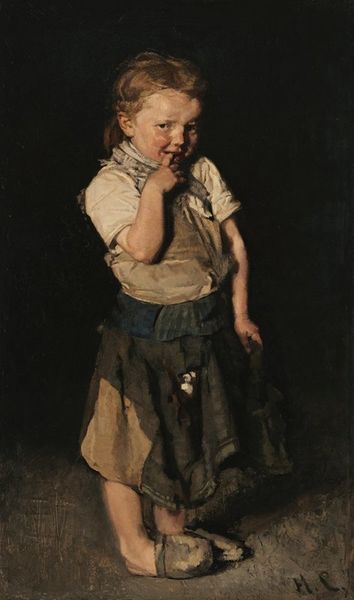
painting, oil-paint
#
portrait
#
painting
#
oil-paint
#
genre-painting
#
modernism
#
realism
Copyright: Public domain
Curator: This is Joan Brull’s “The Grandmother,” painted in 1897. It offers an intimate glimpse into domestic life at the turn of the century. Editor: It's quite dark, isn’t it? Somber, almost. The light seems concentrated on the two figures, really highlighting their expressions and gestures against that enveloping black. Curator: Indeed. Brull uses the genre-painting tradition, depicting everyday life, but filtered through a distinctly Modernist lens. Remember, this period saw significant social upheaval and changes in family structures, especially within the middle classes. A work like this offers a perspective into evolving relationships. Editor: Absolutely. You see that in the very composition itself, don’t you? The diagonal placement of the figures pulls us in, and that light– it emphasizes the texture of their skin, their clothes. It’s quite skillfully painted, wouldn't you agree? The materiality is really rich and intense with clear brushwork Curator: The political symbolism in genre paintings shouldn't be overlooked; The emphasis of the mother figure may be interpreted as reflective of that movement, which may speak to the rise in nationalist fervor across Europe at the time and idealized versions of community building centered on home life. Editor: Perhaps. But that’s where I think we must proceed with caution. Look at that spoon— a focal point, drawing your gaze across the plane of the picture. I feel Brull focused intently on form itself: its balance of light and shadow, the positioning of subjects that feels studied yet believable, more of an intent in the creation of shapes instead of deeper social meaning. Curator: The art market, you see, favored genre scenes that offered an approachable view of everyday life but not social commentary. Brull straddled both worlds in that, presenting scenes that might suggest political interpretations of community values but remaining ambiguous enough to please a wide public audience. Editor: Even the way he applies oil to the canvas contributes—broad, confident strokes give a very concrete feel—and its effect generates the feeling that it isn't a reproduction but some unique perspective within the image Curator: Precisely why this painting and its interpretation offer complexity for later analysis. Brull positions this as both a touching and universal reflection on societal change. Editor: Right, well put, because by stripping away overt messages, he has left us room for our interpretation based on the evidence given.
Comments
No comments
Be the first to comment and join the conversation on the ultimate creative platform.
